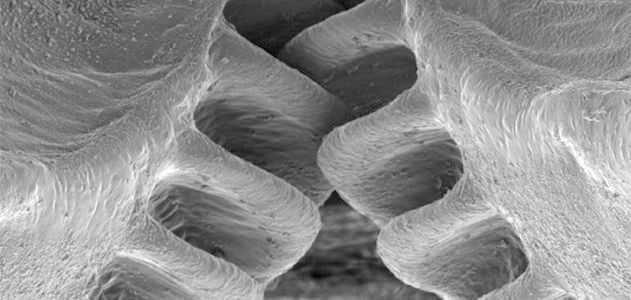The Only Gears Found In Nature

To the best of our knowledge, the mechanical gear—characterized by evenly-sized teeth cut into two rotating surfaces to lock them together as they turn—was invented around 300 B.C.E. by Greek mechanics in Alexandria. Since then, this simple concept has become a cornerstone of modern technology, enabling various machinery and vehicles, including cars and bicycles.
However, it turns out that a tiny, three-millimeter-long hopping insect known as Issus coleoptratus beat us to this invention. Malcolm Burrows and Gregory Sutton, biologists from the University of Cambridge, discovered that juvenile Issus have an intricate gearing system that locks their back legs together, allowing both appendages to rotate simultaneously, propelling the insects forward.

This discovery, published in Science, is believed to be the first functional gearing system ever found in nature. Issus insects, commonly called “planthoppers,” are found throughout Europe and North Africa. Burrows and Sutton used electron microscopes and high-speed video capture to identify the gearing and determine its function.
The gears are essential for coordination: to jump, both hind legs must push forward simultaneously. Since they both swing laterally, if one extended even a fraction of a second earlier than the other, it would push the insect off course instead of jumping straight forward.
The gears provide an elegant solution. High-speed videos showed that Issus juveniles cock their back legs into a jumping position and then push forward, with each leg moving within 30 microseconds of the other. This propels them forward at speeds up to 8-12 miles per hour and exposes them to around 200 G force.
Adult Issus insects lack these gears. As juveniles grow and molt, they do not regrow the gear teeth. Instead, adult legs are synchronized by a different mechanism involving a series of protrusions that push the other leg into action. Burrows and Sutton hypothesize that the fragility of the gearing might explain this—if one tooth breaks, it limits the design’s effectiveness. Juveniles can molt and grow new gears, but adults cannot, hence the alternative arrangement.